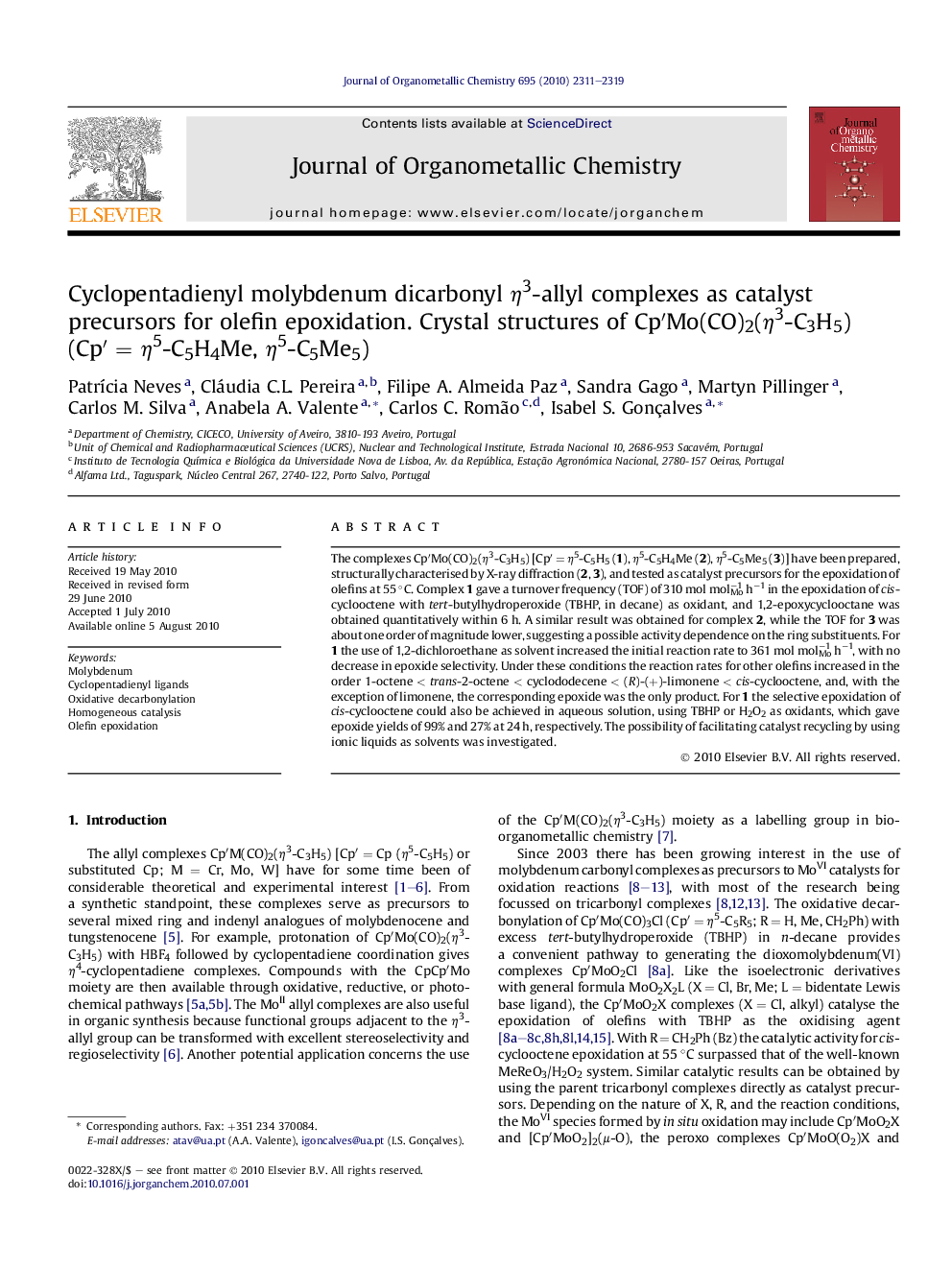| Article ID | Journal | Published Year | Pages | File Type |
|---|---|---|---|---|
| 1324994 | Journal of Organometallic Chemistry | 2010 | 9 Pages |
The complexes Cp′Mo(CO)2(η3-C3H5) [Cp′ = η5-C5H5 (1), η5-C5H4Me (2), η5-C5Me5 (3)] have been prepared, structurally characterised by X-ray diffraction (2, 3), and tested as catalyst precursors for the epoxidation of olefins at 55 °C. Complex 1 gave a turnover frequency (TOF) of 310 mol molMo−1 h−1 in the epoxidation of cis-cyclooctene with tert-butylhydroperoxide (TBHP, in decane) as oxidant, and 1,2-epoxycyclooctane was obtained quantitatively within 6 h. A similar result was obtained for complex 2, while the TOF for 3 was about one order of magnitude lower, suggesting a possible activity dependence on the ring substituents. For 1 the use of 1,2-dichloroethane as solvent increased the initial reaction rate to 361 mol molMo−1 h−1, with no decrease in epoxide selectivity. Under these conditions the reaction rates for other olefins increased in the order 1-octene < trans-2-octene < cyclododecene < (R)-(+)-limonene < cis-cyclooctene, and, with the exception of limonene, the corresponding epoxide was the only product. For 1 the selective epoxidation of cis-cyclooctene could also be achieved in aqueous solution, using TBHP or H2O2 as oxidants, which gave epoxide yields of 99% and 27% at 24 h, respectively. The possibility of facilitating catalyst recycling by using ionic liquids as solvents was investigated.
Graphical abstractThe complexes Cp′Mo(CO)2(η3-C3H5) [Cp′ = η5-C5H5 (1), η5-C5H4Me (2), η5-C5Me5 (3)] are easily storable catalyst precursors that can be used directly for the selective epoxidation of linear and cyclic olefins. The X-ray crystal structures of 2 and 3 are described. Figure optionsDownload full-size imageDownload as PowerPoint slide
